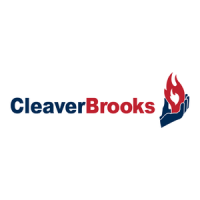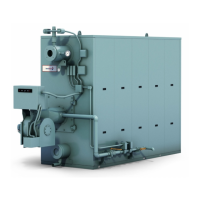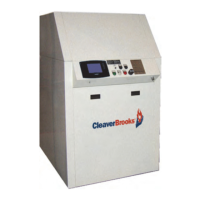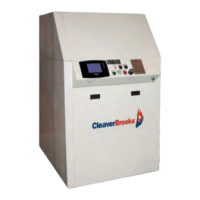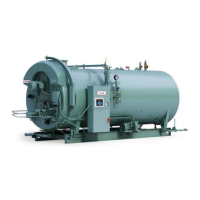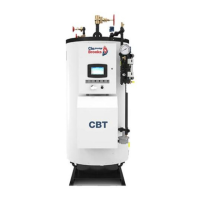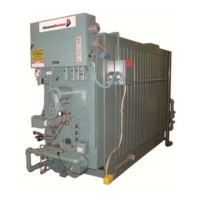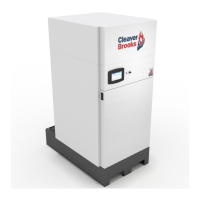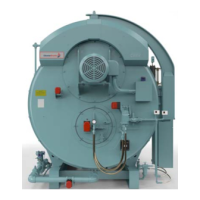Chapter 2 Profire V Burner
2-10 750-177
OIL PIPING
The oil only (VL) and gas-oil (VLG) model burners use pressure
atomization. Fuel oil is provided by a burner
mounted fuel pump directly coupled to the blower motor via a flexible coupling for models V13-55. A remote
pump is used for models V60-168. The suction and return line sizes (two-pipe system) are based on the
suction rate of the fuel pump and not the burner firing rate. Pipe size must be selected so that suction vacuum
is within suitable limits.
A two-pipe system is essential. The suction and return between the
storage tank or supply source and the
burner must be sized to supply the required quantity of oil circulated, including excess oil returned to the
storage tank.
Suction Line Sizing
The suction load is determined by:
• The vertical lift from the oil level in the tank to the pump.
• Pressure drop through valves, fittings, strainers, etc.
• The friction loss due to oil flow. This loss varies with:
a. Quantity of oil pumped (gph).
b. Length of suction line (feet).
c. Diameter of the suction line.
d. Number of fittings.
Although the gear type pumps used on the V series burners are capable of developing higher suction, it is not
desirable to operate above 15 inches of mercury vacuum. If the vacuum is greater, flow may be erratic.
Refer to the manufacturer’s table for line sizing.
1. Check suction capacity.
2. Measure total pipe length (horizontal and vertical).
3. Read up from line “total feet of copper tube” to the intersection line of the sp
ecific “suction capacity” in gph.
4. Read left to column “inches of vacuum at fuel unit.” This is vacuum required to draw oil through pipe listed at given length.
5. Add 1” of vacuum for ever
y foot of lift.
6. Total inches of vacuum (frictional tube loss plus lift).
7. If total exceeds 15”, check next larger pipe si
ze.
Return Line Sizing
Generally, the return line should be sized the same as the suction line.
Two Pipe - Multiple Burner System
Several options exist for a multiple burner installation. Figure 2-8 is a typical installation showing separate
su
ction lines for each burner with a common return line.
Figure 2-9 shows multiple burners with separate suction li
nes. Figure 2-10 shows multiple burners with oil
supplied by a transfer pump. The circulating pump is sized in this case for the total suction capacity of all
burners. Note that a special pressure regulating valve is required if the fuel unit inlet pressure is above 3 psi.
Figure 2-11 shows an installation using a day tank. A
pump supplies oil to the day tank.
Figure 2-12 shows a flooded loop system. The circulating pump
is sized according to the maximum burner
firing rate for all burner plus a 30% service factor. The burner return lines feed into the common supply line.
Notice: C-B recommends that all oil firing burners be equipped with an oil strainer (if not included with
the burner) to prevent particles from clogging the nozzle. It is essential to follow the strainer manufac-
turer’s maintenance schedule to ensure proper filtration
.
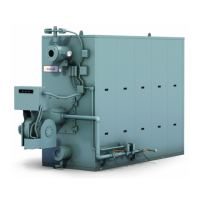
